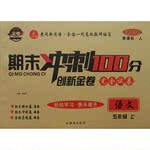题目内容
—Your new dress looks nice. Could you tell me ______ ?
—Sure. I bought it from New Century Store.
A.how you bought it B.where did you buy it
C.where you bought it D.how did you buy it
练习册系列答案
 期末冲刺100分创新金卷完全试卷系列答案
期末冲刺100分创新金卷完全试卷系列答案
相关题目
题目内容
—Your new dress looks nice. Could you tell me ______ ?
—Sure. I bought it from New Century Store.
A.how you bought it B.where did you buy it
C.where you bought it D.how did you buy it
 期末冲刺100分创新金卷完全试卷系列答案
期末冲刺100分创新金卷完全试卷系列答案